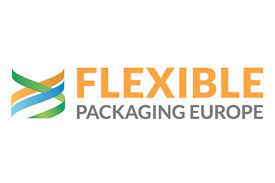One week left before the European Parliament vote on the Proposal for a Regulation on Packaging and Packaging Waste (PPWR), an important and long-awaited step forward for the future of the way we package products for decades to come. Since day one, Flexible Packaging Europe (FPE), representing flexible packaging suppliers, has welcomed the proposal, which signifies a great opportunity to scale up circularity and lower the total environmental impacts of production and consumption of packaging and packaged goods.
The PPWR report voted in the ENVI Committee has already improved several points of the Commission’s original proposal, namely recyclability requirements and recycled content for plastic packaging. However, a few remaining important points need to be addressed and we hope the European Parliament plenary can make the necessary final improvements resulting in a text that is ambitious in its objectives and feasible for the European industry at the same time.
Designing for Recyclability
We welcome new rules mandating true recyclability of all packaging. While it is true that so far flexible packaging has been challenging to recycle, it is also true that the present and the future of this sector are based on rapid and continuous innovation and development both in packaging design and in collection, separation and recycling technologies. The CEFLEX “Design for a Circular Economy” guidelines for flexible packaging is an example of industry striving for a value-chain approach to ensure packaging is designed to be recyclable from the get-go.
In this light, our industry still sees two concerns:
- Packaging for baby food can be made recyclable without any impact on the safety of those products. This is already the case today and shifting that approach would reverse decades of packaging innovation. We are concerned to see that the ENVI report is granting exemptions for those products until 2038 or even 2040, when many of the baby food products purchased today are in recyclable flexible pouches.
- Banning all packaging falling under the recyclability performance grade D, in addition to the one already envisaged on Grade E, would hinder innovation and potentially have a devastating impact on different packaging formats.
Collection and sorting to boost recycling
Flexible packaging will be recyclable and recycled in practice but to achieve this goal the industry needs ambitious obligations for Member States and Extended Producer Responsibility schemes to boost separate collection systems and ensure the actual recycling of packaging that is designed to be recyclable.
A widespread and effective separate collection is paramount to achieving full circularity. That is why we ask the European Parliament to make it mandatory for Member States to sort waste that is not separately collected in order to capture recyclable packaging. CEFLEX’s compositional waste analysis shows that a significant proportion of recyclable flexible packaging still ends up in mixed waste, even in countries with mature separate collection schemes.
Safety net for recycled content target in plastic packaging
We welcome the setting of appropriate mandatory recycled content targets for plastic packaging. Those targets, with appropriate safeguards and scope, will boost the market for recycled plastics as well incentivize investments in advanced recycling technologies which will be needed, complementary to mechanical recycling.
However, an important detail escaped. Before the PPWR’s recycled content target enters into force in 2030, the Commission is supposed to assess the potential lack of availability of recycled plastics or adverse effects on human or animal health, security of food supply or the environment. Strangely enough, according to the ENVI Committee report, this assessment should only be triggered in 2032, two years after the target will have to be reached by economic operators. The purpose of this clause is to avoid a disruption to supplies of packaging, especially for food, and to the distribution of the goods it contains.
Therefore, this safeguard is needed some time before the target is set to be reached in 2030, and not two years later in 2032. Otherwise, such an assessment loses its utility. We therefore call on the European Parliament to retain the original proposal for the assessment to be carried out before 1 January 2028, at the very latest.
In the modern society we live in, flexible packaging is intrinsically linked to household staples and there is a good reason for this: it provides appropriate protection against contamination and product spoilage, and keeps the food nutritious, fresh, and savoury during the necessary shelf life. 50% of all food products sold in the European retail market are using flexible packaging, while such flexible packaging contributes only to 17% of food packaging waste generated by weight – this is resource efficiency in products, innovative design, and waste prevention in action!
Let’s not miss out on the opportunity to get the PPWR right and build a strong and truly circular single market for packaging and packaged goods. The flexible packaging sector is committed to supporting this goal by providing fully recyclable packaging solutions made with as little resources as possible.
In partnership with

This article was produced in partnership with Flexible Packaging Europe.
Sign up to The Parliament's weekly newsletter
Every Friday our editorial team goes behind the headlines to offer insight and analysis on the key stories driving the EU agenda. Subscribe for free here.